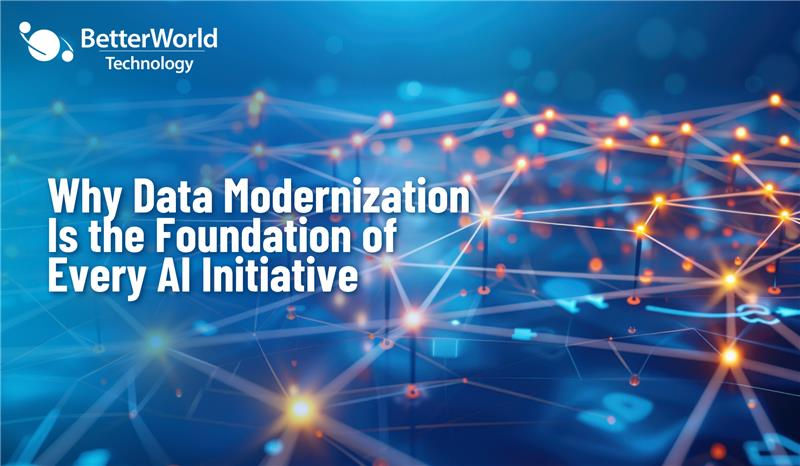How to Train Your Team for Managed IT Services: Essential Steps
- John Jordan

- Jul 20, 2024
- 6 min read
Training your team for managed IT services can seem like a big task. However, with the right steps, you can make sure your team is ready to handle any challenges that come their way. This article will guide you through the essential steps to train your team effectively.
Key Takeaways
Understanding the basics of managed IT services is crucial for aligning your team's efforts with business goals.
A comprehensive onboarding program ensures that new team members are well-prepared and confident in their roles.
Effective training techniques, such as hands-on sessions and online learning, can significantly enhance skill development.
Continuous learning and development are vital for keeping your team updated with the latest IT trends and practices.
Monitoring and evaluating training effectiveness helps in making necessary adjustments and improvements to the training programs.
Understanding the Basics of Managed IT Services
Managed IT services involve outsourcing various IT functions to a third-party provider, known as a Managed Service Provider (MSP). These services can include network management, security management, and data backup and recovery. Understanding how managed service providers (MSPs) are shaping the business landscape is crucial for any organization looking to improve operational efficiency through IT management.
Identifying Business Needs and Goals
Before diving into managed IT services, it's essential to identify your business needs and goals. This involves assessing your current IT infrastructure and determining what areas require improvement. By doing so, you can tailor the services to meet your specific needs.
Developing a Strategic Training Plan
A strategic training plan is vital for ensuring your team is well-prepared to work with managed IT services. This plan should outline the necessary skills and knowledge required, as well as the training methods to be used. Regular training sessions and workshops can help keep your team updated on the latest technologies and best practices.
Standardization and Specialization
Standardization involves creating uniform processes and procedures for managing IT services. This ensures consistency and efficiency across the board. On the other hand, specialization allows team members to focus on specific areas of IT, such as cybersecurity or network management, enabling them to become experts in their fields.
Creating a Comprehensive Onboarding Program
A well-structured onboarding program is crucial for setting the tone for new employees. Never underestimate how good onboarding can shape an employee's experience and performance. This is especially important when they will be dealing directly with your clients and potential income sources.
Setting Up and Configuration
Start by setting up and configuring all necessary systems and tools. This ensures that new hires have everything they need from day one. A solid communication plan outlines onboarding objectives and frequently delivers key messages about transition status, accomplishments, and risks. Communication tools like Microsoft Teams facilitate easy interaction between internal and onboarding teams.
Employee Training and Support
A critical component of the onboarding process is training the organization’s staff. Employees need to be comfortable and proficient with the new systems. Training sessions, workshops, and support materials are typically provided to ensure a smooth transition. Provide educational resources that break down their roles, tasks, and assignments. Avoid information overload by using tools like Scribe to create an evergreen onboarding resource bank.
Documentation and Resources
Documentation is key to a successful onboarding program. Provide a repository of resources that employees can refer to at any time. This includes FAQs, how-to guides, and other support materials. Make sure there is a system for providing answers to any questions they might have. This helps new hires learn and pick up at a sensible pace and conveniently.
Implementing Effective Training Techniques
To ensure your team excels in managed IT services, it's crucial to use effective training techniques. Hands-on training sessions are vital as they allow employees to practice real-world scenarios. This method helps them understand and retain information better.
Online learning platforms are another great tool. They offer flexibility and a wide range of resources. Employees can learn at their own pace, which can be very beneficial.
Mentorship and peer support play a significant role in training. Experienced team members can guide new employees, providing insights and tips that are not found in manuals. This fosters a supportive learning environment.
Ensuring Continuous Learning and Development
Continuous learning and development are crucial for keeping your team sharp and ready for any challenge. Investing in ongoing education can enhance problem-solving abilities and project management expertise, mitigating the risk of project failures and other issues.
Monitoring and Evaluating Training Effectiveness
Tracking Key Performance Indicators
To ensure your training program is effective, it's crucial to track key performance indicators (KPIs). These metrics help you understand if your team is meeting the desired goals. Regularly monitoring these KPIs can highlight areas where the training is working well and where improvements are needed. Common KPIs include employee productivity, error rates, and customer satisfaction scores.
Gathering Employee Feedback
Employee feedback is invaluable for assessing the effectiveness of your training program. Encourage your team to share their thoughts on the training sessions, materials, and overall experience. This feedback can be gathered through surveys, one-on-one meetings, or team discussions. Listening to your employees can provide insights into ways to sustain your server management and improve the training process.
Adjusting Training Programs Based on Data
Once you have collected data from KPIs and employee feedback, it's essential to adjust your training programs accordingly. Use this information to identify gaps in knowledge or skills and update your training materials to address these areas. This continuous improvement approach ensures that your team remains proficient and can adapt to new challenges effectively.
Fostering a Culture of Collaboration and Support
Encouraging Open Communication
To foster collaboration, it's crucial to cultivate a culture of mutual support and clear communication. Encourage team members to share all ideas, even the "half-baked" ones. Sometimes, these initial thoughts can spark creativity and lead to great solutions. Treating every idea as important keeps team members from holding back.
Building Cross-Functional Teams
Cross-functional teams bring together diverse skills and perspectives, which can lead to innovative solutions. By working together towards specific tangible results, team members can develop trust and mutual accountability. Recognize and celebrate small accomplishments and milestones to reinforce this trust.
Recognizing and Rewarding Achievements
Acknowledging successes, both big and small, helps build a supportive environment. Celebrate individual achievements and team milestones to show appreciation for hard work. This not only boosts morale but also encourages continuous effort and improvement.
Leveraging Technology for Training
Using Simulation Tools
Simulation tools offer a practical way to train your team by mimicking real-world scenarios. These tools help employees practice and improve their skills without the risk of real-world consequences. For example, IT staff can learn how to handle network issues in a controlled environment, which helps in improving the efficiency and effectiveness of a company's digital operations.
Incorporating AI and Machine Learning
AI and machine learning can personalize the training experience for each employee. These technologies analyze performance data to suggest tailored learning paths. This not only makes training more effective but also keeps employees engaged. AI-driven insights can identify areas where an employee needs improvement, allowing for targeted training sessions.
Implementing Virtual Reality Training
Virtual reality (VR) offers an immersive training experience that can be particularly useful for complex tasks. VR can simulate various IT scenarios, providing hands-on experience in a safe setting. This method is especially beneficial for tasks that require a high level of precision and practice. By using VR, companies can reduce the need for manual labor while increasing opportunities to integrate advanced technologies into their training programs.
Using technology in training can make learning faster and more fun. Our services, like managed IT and cybersecurity, help you stay ahead. Visit our website to see how we can help you succeed.
Frequently Asked Questions
What are managed IT services?
Managed IT services are when a company outsources its IT tasks to a third-party provider. This can include things like network management, security, and data backup.
Why is training important for managed IT services?
Training ensures that your team knows how to use and manage IT tools effectively, which helps in maintaining smooth operations and solving problems quickly.
How do I start training my team for managed IT services?
Begin by understanding your business needs and goals. Then, develop a strategic training plan that includes hands-on sessions, online learning, and continuous support.
What should be included in an onboarding program?
An onboarding program should include setting up and configuring IT systems, employee training, and providing resources and documentation for ongoing support.
How can I make sure the training is effective?
To ensure training is effective, track key performance indicators, gather feedback from employees, and adjust the training programs based on the data you collect.
What role does technology play in training?
Technology can enhance training through simulation tools, AI, and virtual reality, making learning more interactive and effective.









